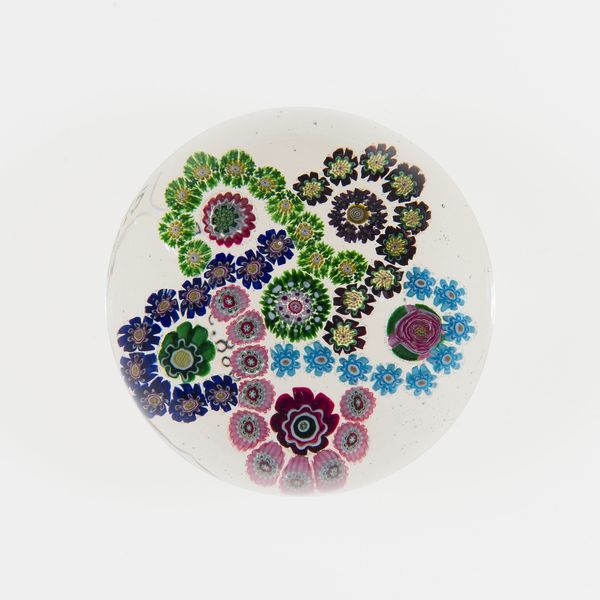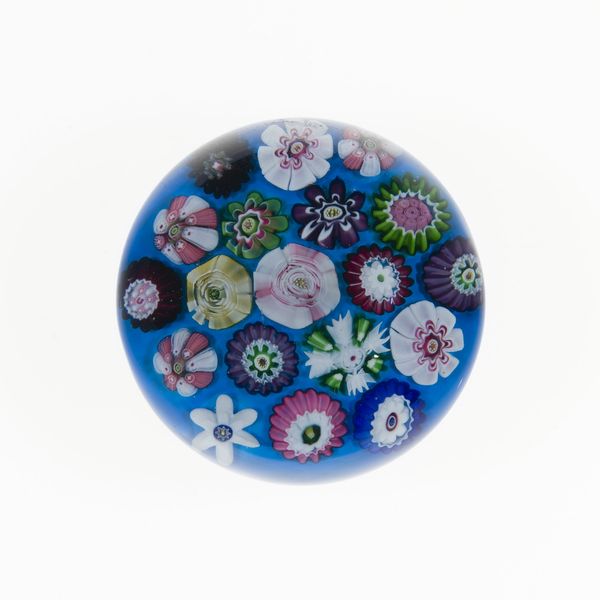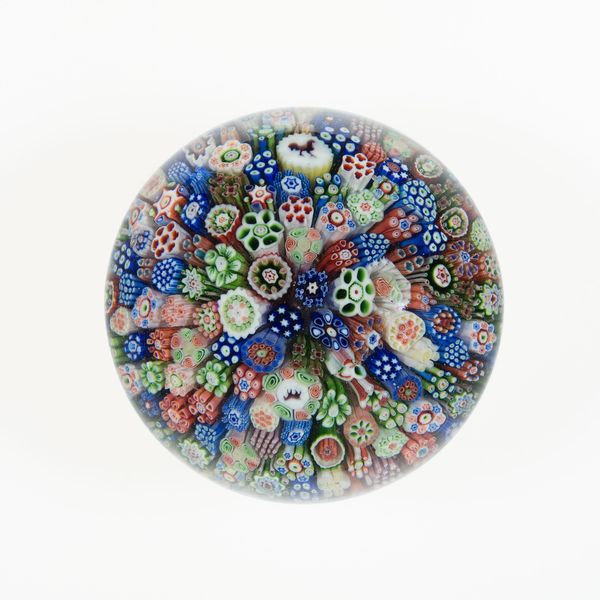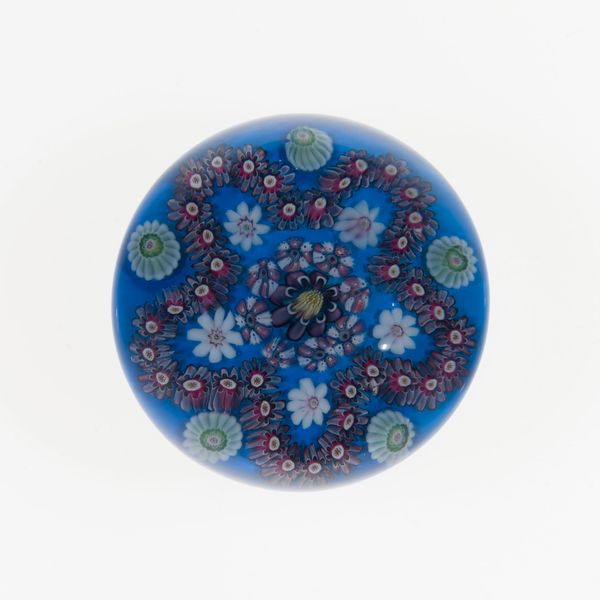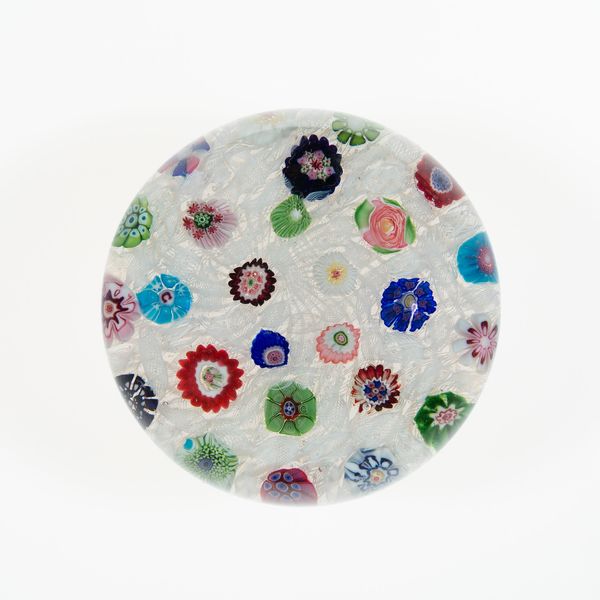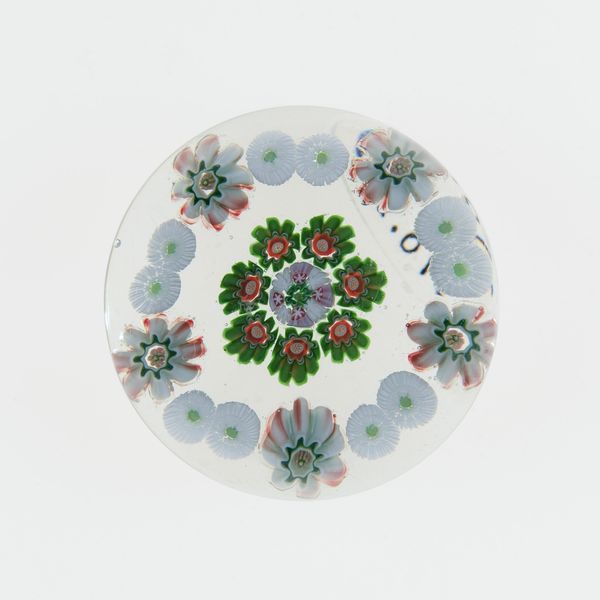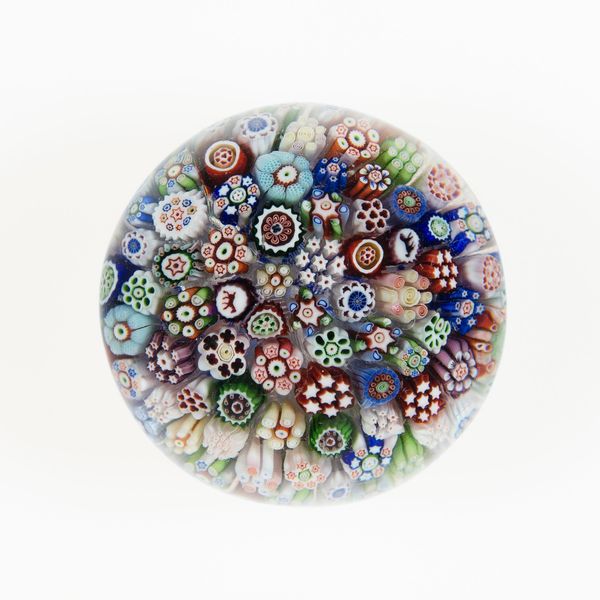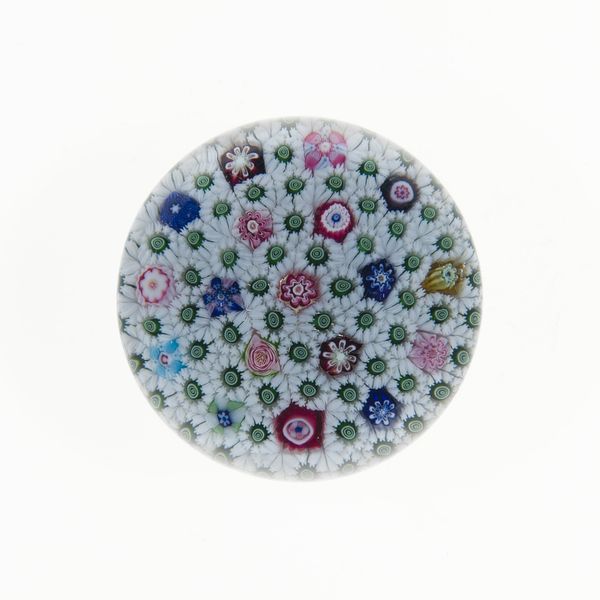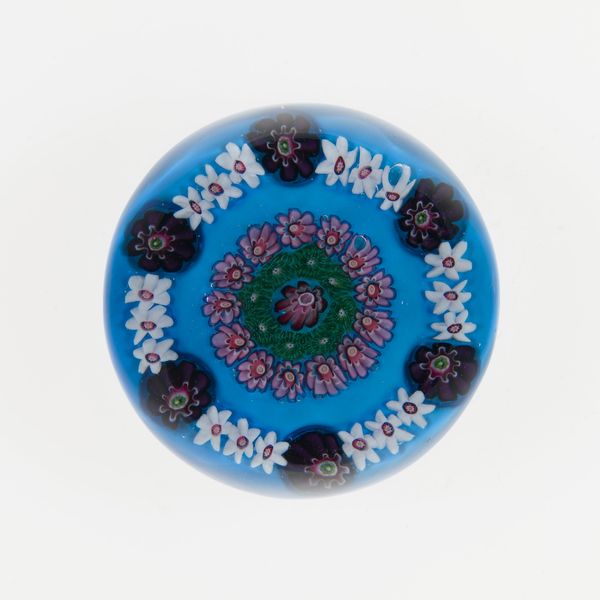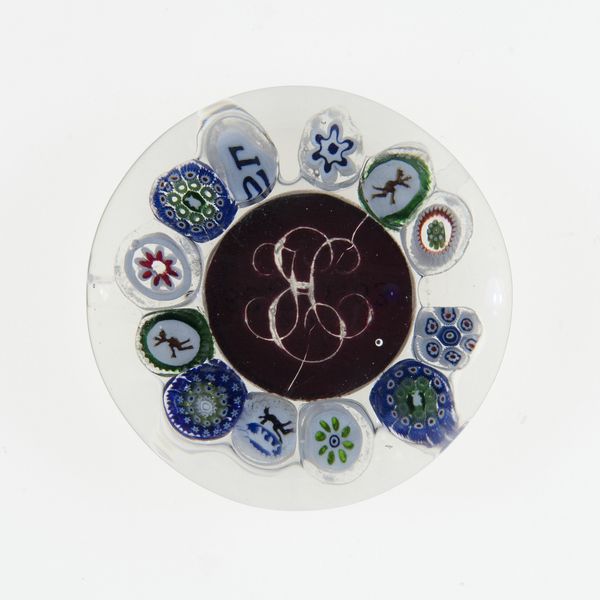
paper, glass, sculpture
#
paper
#
glass
#
sculpture
#
france
#
decorative-art
Dimensions: Diam. 5.1 cm (2 in.)
Copyright: Public Domain
Editor: Here we have a delightful glass paperweight from the Clichy Glasshouse, likely crafted sometime between 1845 and 1860. Its miniature world of colorful flowers encapsulated in glass is captivating. I find it surprisingly cheerful. How do you interpret this particular piece within its historical context? Curator: These paperweights emerged during a period of intense industrial innovation and growing fascination with both scientific display and decorative arts. Mass production allowed for intricate designs, such as the *millefiori* seen here, to become accessible, marking a shift in how artistry was integrated into everyday objects. This intersects with broader social trends. Can you imagine where these were displayed? Editor: Perhaps on a desk in a Victorian-era study, bringing a bit of the garden indoors, or a lady's writing desk? Curator: Precisely. The paperweight, then, wasn't simply functional. It acted as a marker of social status, and reflected the owner's appreciation for beauty. Moreover, consider the implications of memorializing flora in such a permanent medium. It speaks volumes about the Victorian desire to categorize and preserve the natural world in the wake of rapid urban expansion. In what ways did public spaces contribute to this context? Editor: Thinking about public gardens and the Crystal Palace exhibitions of the time, these both popularized botany and technological progress together. So this object might then be reflecting, in miniature, grander ideas about display and achievement? Curator: Absolutely. And the flowers, although meticulously arranged, represent a controlled, almost clinical observation of nature. The question I always ask is: Who got to own, and thereby curate, even a tiny world like this? And what did that mean for representations of power? Editor: I never thought a paperweight could hold so much historical weight. Curator: The beauty of art lies in its capacity to echo its time, no matter how small the object. Editor: Right. Seeing it as a product of its cultural landscape truly changes my understanding.
Comments
No comments
Be the first to comment and join the conversation on the ultimate creative platform.
